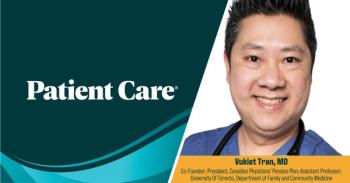
Teenage Smoking Tied to Increased Risk of Adolescent Asthma
LOS ANGELES -- Children and teenagers who smoke have an increased risk of developing asthma within the next few years, especially if they were exposed during gestation to maternal smoking, researchers here found.
LOS ANGELES, Nov. 16 -- For children and teenagers who smoke, an asthma time bomb may be lurking, one that began ticking years earlier.
Teenagers who reported smoking 300 or more cigarettes a year had almost four times the risk for new-onset asthma during their adolescent years compared with non-smokers, researchers reported in the November issue of the American Journal of Respiratory and Critical Care Medicine.
But regular smokers who had been exposed to maternal smoking during gestation had almost nine times the asthma risk compared with nonsmokers, said Frank Gilliland, M.D., Ph.D., of the University of Southern California, and colleagues. The risk was also greater among nonallergic than among allergic children.
Smoking causes a non-allergic type of inflammatory response in the airways that differs from the allergic inflammation that occurs with allergen exposure, Dr. Gilliland noted. This, he said, may explain why the effect is large in nonallergic children. Studies of asthma and traffic exposure, for example, show larger effects in nonallergic children, he added.
Although involuntary exposure to maternal smoking in utero and to secondhand smoke is associated with developing childhood asthma, until now few studies have investigated the role of active cigarette smoking on asthma onset during adolescence, the researchers said.
Their smoking-asthma findings came from the Children's Health Study, a prospective cohort study of 2,609 children with no lifetime history of asthma or wheezing. The participants, ages eight to 15 years, were recruited from fourth- and seventh-grade classrooms in schools in 12 southern California communities and were followed annually through high school graduation.
Regular smoking was defined as smoking at least seven cigarettes a day on average over the previous week and 300 cigarettes in the year before each annual interview. Incident asthma was defined by new cases of physician-diagnosed asthma.
Over the follow-up period, 28% of the children reported any cigarette smoking during their lifetime, while 6.9% were classified as regular smokers, lighting up an average of at least once a day (seven or more cigarettes a week).
Differences in smoking prevalence -- but not asthma -- were small between those exposed and not exposed during gestation, although more of those exposed to maternal smoking were regular smokers, the researchers reported.
There were 255 cases of new-onset asthma (104 males, 151 females) during the follow-up period. The overall incidence rates of asthma were 17.8/1,000 person years, with a higher incidence among girls (19.4/1,000 person years) than boys (16.0/1,000 person years).
Over the six- to eight-year period of follow-up, regular smoking was associated with an increased risk of new-onset asthma as follows:
- Teens who smoked seven or more cigarettes a week had 3.1 times the increased risk of incident asthma compared with nonsmokers (95% confidence interval, 1.5-6.2).
- Teens who reported smoking 300 or more cigarettes per year had a 3.9-fold increased risk (CI, 1.7-8.5) for new-onset asthma compared with nonsmokers.
- Regular smokers who were exposed to maternal smoking during gestation had 8.8 times the asthma risk (CI, 3.2-24.0).
- The increased risk from regular smoking was greater in nonallergic than in allergic children.
The associations between active smoking and asthma were not substantially affected by educational attainment, family income, other demographic factors, birth weight, gestational age, physical activity levels, family history of asthma, household characteristics, or exposure to indoor pollutants, including secondhand smoke, the researchers said.
However, there was evidence of a more than eightfold transgenerational effect of smoking on asthma risk, the researchers said. In contrast, analysis of children who were not exposed during their mother's pregnancy showed only a small but statistically nonsignificant asthma risk from frequent regular smoking (RR 1.2, CI 0.4-40).
The increase susceptibility to regular smoking associated with nonallergic status and in utero exposure to maternal smoking appeared to be independent susceptibility factors, the researchers said.
Nonallergic children who became regular smokers and who were exposed in utero to maternal smoking had a 10.6-fold increased risk of asthma compared with nonallergic unexposed nonsmokers. Among atopic regular smokers exposed in utero, the asthma risk was 4.1-fold.
The researchers wrote that they did not investigate the mechanisms that mediate the associations of regular smoking with new-onset asthma, but added that this association has strong biological plausibility. Active smoking has a complex acute and chronic effect on pulmonary immune function and proinflammatory responses.
Changes in airway function may also be involved, and the combined effect of all these factors may set the stage for the onset of asthma.
Smoking may act through nonallergic pathways and have a larger effect in those with low lung function, a consequence of exposure to maternal smoking during pregnancy, the researchers suggested.
Among the study's limitations was the researchers' inability to directly determine whether a diagnosis truly represented an incident case of asthma or a second occurrence. Also the use of self-reported smoking histories may have led to an under-estimate of the link between smoking and new-onset asthma.
The failure to find an association between second-hand smoke exposure and asthma may have been due to a misclassification of ambient exposure as the researchers did not collect information on smoke exposure in social situations.
The clinical and public health implications for these findings are far reaching, Dr.Gilliland said. Effective tobacco control efforts focusing on the prevention of smoking in children, adolescents, and women of childbearing age are urgently needed to reduce the number of these preventable cases of asthma.
"The substantially increased risk for developing a common activity-limiting chronic disease such as asthma after initiating regular smoking behavior may provide new motivation for adolescents to refrain from smoking," the researchers concluded.
Newsletter
Enhance your clinical practice with the Patient Care newsletter, offering the latest evidence-based guidelines, diagnostic insights, and treatment strategies for primary care physicians.



























































































































































































































































































































